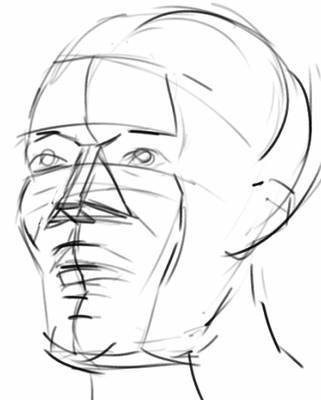Getting Started With Your Drawing Paper: Buy art paper made specifically for drawing portraits, it's thicker than ordinary paper, so repeated eraser use won't wear it down easily. Blending tool: This tool helps you blend the transition areas between varying skin tones while you draw a face profile. Art stores sell special blending stumps; alternatively, you can use cotton wool, paper tissue or soft cloth to achieve the same effects. |
|
 | Techniques to Draw a Face Profile For a simple sketch, start off with a 6-square grid. Sketch each part of the profile against the central vertical line, for example, the nose in the central square, forehead against the topmost square and chin and lips fitting into the lowest square. |
